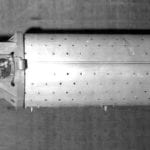 Creepy
Creepy  Creepy
Creepy  Technology
Technology 10 Scientific Breakthroughs of 2025 That’ll Change Everything
 Our World
Our World 10 Ways Icelandic Culture Makes Other Countries Look Boring
 Misconceptions
Misconceptions 10 Common Misconceptions About the Victorian Era
 Mysteries
Mysteries 10 Strange Unexplained Mysteries of 2025
 Miscellaneous
Miscellaneous 10 of History’s Most Bell-Ringing Finishing Moves
 History
History 10 Great Escapes That Ended Right Back in Captivity
 Weird Stuff
Weird Stuff 10 Fascinating Things You Might Not Know About Spiders
 Food
Food 10 Everyday Foods You Didn’t Know Were Invented by the U.S. Military
 History
History 10 Odd Things Colonial Americans Kept at Home
 Creepy
Creepy 10 More Representations of Death from Myth, Legend, and Folktale
 Technology
Technology 10 Scientific Breakthroughs of 2025 That’ll Change Everything
 Our World
Our World 10 Ways Icelandic Culture Makes Other Countries Look Boring
Who's Behind Listverse?

Jamie Frater
Head Editor
Jamie founded Listverse due to an insatiable desire to share fascinating, obscure, and bizarre facts. He has been a guest speaker on numerous national radio and television stations and is a five time published author.
More About Us Misconceptions
Misconceptions 10 Common Misconceptions About the Victorian Era
 Mysteries
Mysteries 10 Strange Unexplained Mysteries of 2025
 Miscellaneous
Miscellaneous 10 of History’s Most Bell-Ringing Finishing Moves
 History
History 10 Great Escapes That Ended Right Back in Captivity
 Weird Stuff
Weird Stuff 10 Fascinating Things You Might Not Know About Spiders
 Food
Food 10 Everyday Foods You Didn’t Know Were Invented by the U.S. Military
 History
History 10 Odd Things Colonial Americans Kept at Home
Top 10 Gruesome Accounts Of Sing Sing’s Electric Chair
Sending prisoners to “Old Sparky” was serious business in one of America’s oldest prisons. After all, Sing Sing, located in New York State, had a gruesome reputation to uphold and the executioner was paid a pretty penny to flip that switch.
In the early 1900s, newspapers across the world printed reports on the latest criminals sentenced to die by the chair. There were debates about whether the electric chair was cruel or humane. People questioned the guilt of some of those who were sentenced to die.
Some reporters dabbled in gallows humor while others tried to report on the cases without taking sides. There were plenty of articles which worked to humanize those who met with the chair and a few that were heartless in their reports of the last pangs of death.
10 The New Chair
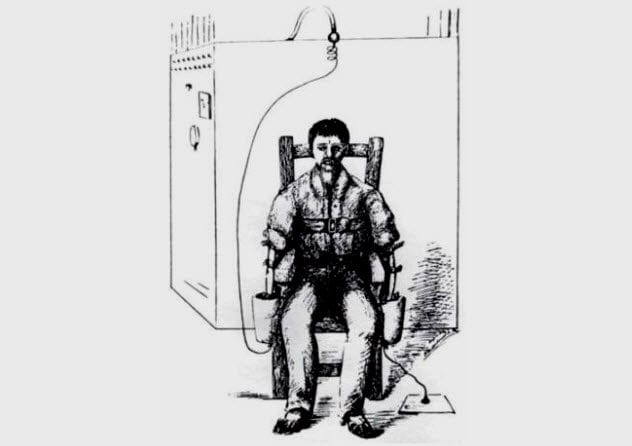
In 1892, papers were buzzing with the news that Sing Sing had a new electric chair. The first person to be placed in it was Charles McElvaine, a convicted murderer. The description of his final day was published for all to read.
First, the death warrant was read to the prisoner at midnight. The warden then advised Charles to catch up on his sleep, as though he would need it to sit in the electric chair. In the morning, the priest arrived and the prisoner ate a light breakfast. Charles carried a cross before him as he made his walk to the chair. He was strapped into place and then:
The first contact at 11:15 o’clock was made through the hands and head, and lasted forty-five seconds, the second was through the head and calf of the right leg. A few seconds after the current was cut off of the first contact, froth issued from the mouth, and almost simultaneously there was a quick, gurgling sound, and as quick a recovery, like a person strangling. The current was at once reapplied and continued for 45 sec., when the doctors examined the subject and declared him dead.
9 Smile

Five men were sentenced to die in Sing Sing’s electric chair in 1921, and oddly enough, it was reported that some of the men were determined to die with a smile. Two of the men were convicted murderers, and the remaining three assisted in one of the murders.
On the day of the execution spree, the first man went to the chair and said, “You will now see an innocent man die. I shall die with a smile on my face. Can you see it?”
After he was pronounced dead, the second man, a mere 20 years old, was brought in. This one shook with fear and needed help sitting in the chair. He had no words to share.
The third prisoner, labeled an “imbecile,” entered and declared that he was going to die with a smile on his face. The fourth man walked into the room and said hello to everyone. When the last electrode was applied to him, he said goodbye.
The final prisoner sat in his cell while the others were being executed and sang “Oh, What a Girl Was Mary” until it was his turn. When he entered the room, he said, “I know I’ve done wrong and I deserve to die.”
After being strapped in, he shouted, “Let ‘er go!” He was the only man in the lot who managed to die with what appeared to be a smile on his face. Unfortunately, this man was also considered to be a “mental defective” and may not have realized the full seriousness of the situation.
8 Not Just For Men
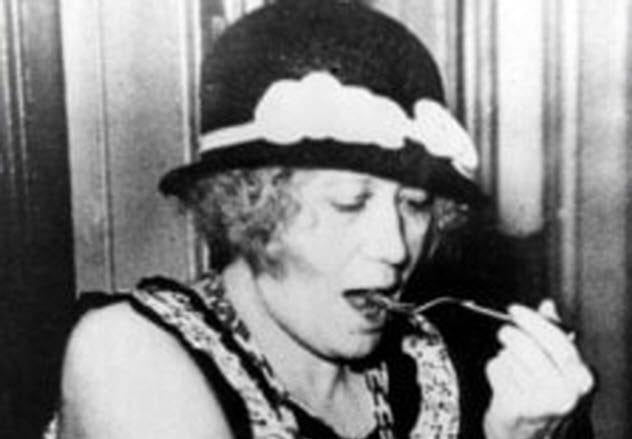
Men were not the only people getting fried in Sing Sing. Women got zapped, too. For instance, it was reported in 1935 that Mrs. Eva Coo had just met her fate in the electric chair.
Mrs. Coo was the owner of a roadside amusement resort. Whether it was greed or desperation, she decided to murder one of her employees for the insurance money. First, she clubbed the man over the head and knocked him unconscious.
Then, as he lay on the road, she got in her car and drove over the fellow multiple times. She had hoped that the whole thing would look like a total accident, but people do not normally drive over a victim multiple times in an accident.
Mrs. Coo was arrested, found guilty, and sent to Sing Sing to await her death. She went to the chair in June 1935. A few minutes after her execution, a gangster took her seat.
7 Anything To Avoid The Hot Squat

Prisoner Louis Boy had been sitting in Sing Sing for 18 years for murder. He was awaiting his date with the electric chair when he had the opportunity to participate in a medical experiment. The idea was to cure a young girl of leukemia. He knowingly allowed “18 quarts of blood in his body [to] pass through the body of the stricken child in a vein to vein exchange.”
Unfortunately, the young girl passed away a few days after the experiment. Louis Boy, however, was given his freedom by the governor in 1949 for allowing himself to be used in the experiment.
6 A Song And Dance
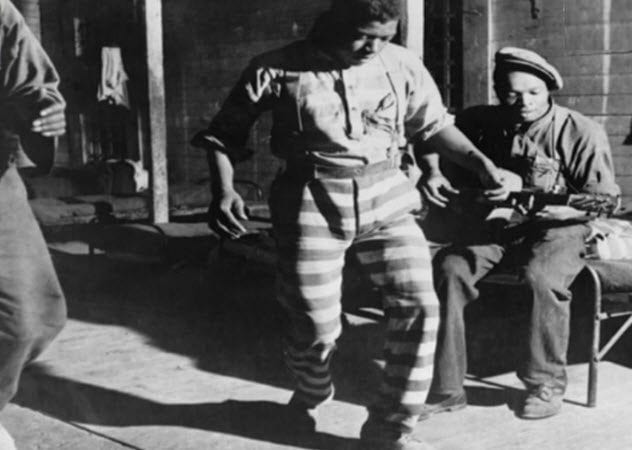
In 1925, it was reported that US prisoners exhibited strange behavior on execution days. In England, for example, prisoners would be sent to their cells where “they stay till the whole terrible thing is over.” That was not the case in Sing Sing.
In Sing Sing, prisoners were allowed to dance and sing during the executions. Sometimes, they would put on plays of extreme comedy. While it may seem gruesome to allow the inmates to carry on, there was a logical explanation for the behavior:
Since the law says executions must go on, they must. Were the show called off for that night, many other men in Sing Sing would have nothing on their minds but the electrocutions. With the entertainment in progress, there will be something else for at least many of the inmates to think about, which fact may be a godsend. We have heard that execution night is a period of extreme depression for the inmates of the prison. The realization of what is happening in the death house drives some of them almost frantic. Therefore, if “Sue, Dear” can save men mental anguish, it will have performed a great service.
5 A Mother’s Last Goodbye

In 1934, Anna Antonio gave her three-year-old son an apple to eat. It was her last gift to her son. She was allowed to spend a few hours playing with him before kissing him goodbye.
Anna Antonio’s head was shaved, and she was led to the electric chair. As she murmured her prayers, she was strapped into the seat and the helmet was placed over her head. A few moments later, she was dead.
A few of the witnesses fainted, and the priest crossed himself, clearly upset over the ordeal. She was the fourth woman to have been executed in the chair at Sing Sing and was certainly not the last.
She had been sentenced to death for the murder of her husband. The two men she had hired to do the job were executed immediately after her.
4 Too Late To Learn Patience

Charged with murder, Giovanni Ferraro was sentenced to die in the electric chair in 1919. He was hoping that the governor would commute his sentence to life in prison after he learned that another convicted murderer had just received a commutation to life in prison.
Believing that the governor had turned down his plea, Ferraro went wild with rage. He lashed out at three of the guards and attacked them with a knife. Two of the men were severely wounded, and Ferraro attempted to escape.
He was subdued, and news was sent to the governor about the attack. He was scheduled to look over Ferraro’s plea that day but turned it down after hearing about Ferraro’s behavior.
After Ferraro’s execution, it came to light that it was almost certain that his life was going to be spared by the governor.
3 Not An Easy Job
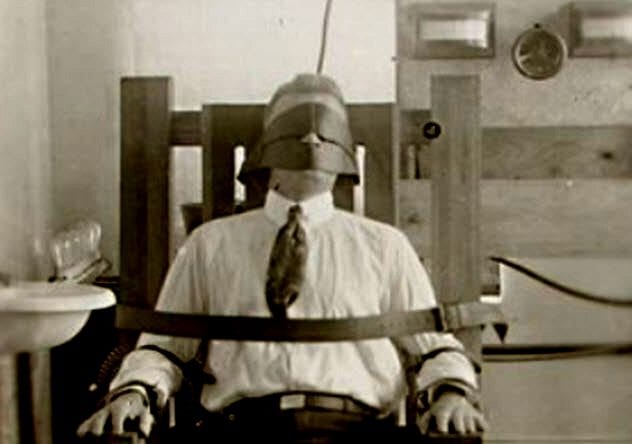
John W. Hulbert was the executioner at Sing Sing from 1913 to 1926. During his time there, he received numerous threats against his life. The man kept to himself and never took a sleeping coach for fear of being murdered.
Before one particular execution, his food was poisoned and Hulbert was almost unable to carry out his job. Another time, he traveled to Omaha to introduce the electric chair there. He was met by a mob and nearly lynched. He finally left his job because “I got tired of killing people.” He oversaw a total of 140 executions in Sing Sing.
In 1929, Hulbert was found dead inside his home. He had a bullet wound to his abdomen and one to his head. His death was ruled a suicide.
2 Paid Well

In spite of the hazards associated with being the executioner at Sing Sing, there were 85 applications for the position two days after it was learned that John Hulbert had resigned. Men actively vied for the position of executioner.
The reasons for interest in the position no doubt varied, but the main draw was how much an executioner could make in a single day. The position had a base salary plus bonus pay on the days of executions. The amount could add up to over $400 a day, which was a lot of money in 1926.
Rumor had it that the warden wanted to fill the position immediately. Although he was against capital punishment, the warden would have had to conduct the executions himself without an executioner on-site.
1 A Horrific Death
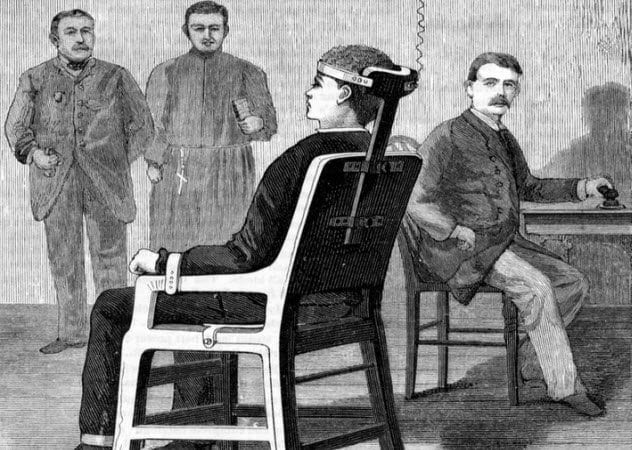
The electric chair was originally used as a more humane method to execute someone. Thomas Edison himself worked on perfecting the chair’s electric charge. It was supposed to be more efficient and less painful than hanging, but early trials with the chair proved to be gruesome.
In 1926, the chaplain of Sing Sing retold an account of an execution on an experimental electric chair from the late 1800s. The condemned was strapped to the chair, and a polished brass cap was set on his head. No gag was placed in his mouth. When the switch was thrown, the prisoner screamed. His convulsions were so strong that one of the leather arm straps broke.
Still alive, the prisoner was given a second jolt. Again, he screamed and convulsed. The priest begged the other men to put the man out of his misery.
The governor, who was present to witness the event, rushed out of his seat, grabbed the switch, and sent a strong, steady stream of electricity to the prisoner. It took eight minutes in total to kill the prisoner in the chair.
Elizabeth, a former Pennsylvania native, recently moved to the beautiful state of Massachusetts where she is currently involved in researching early American history. She writes and travels in her spare time.




